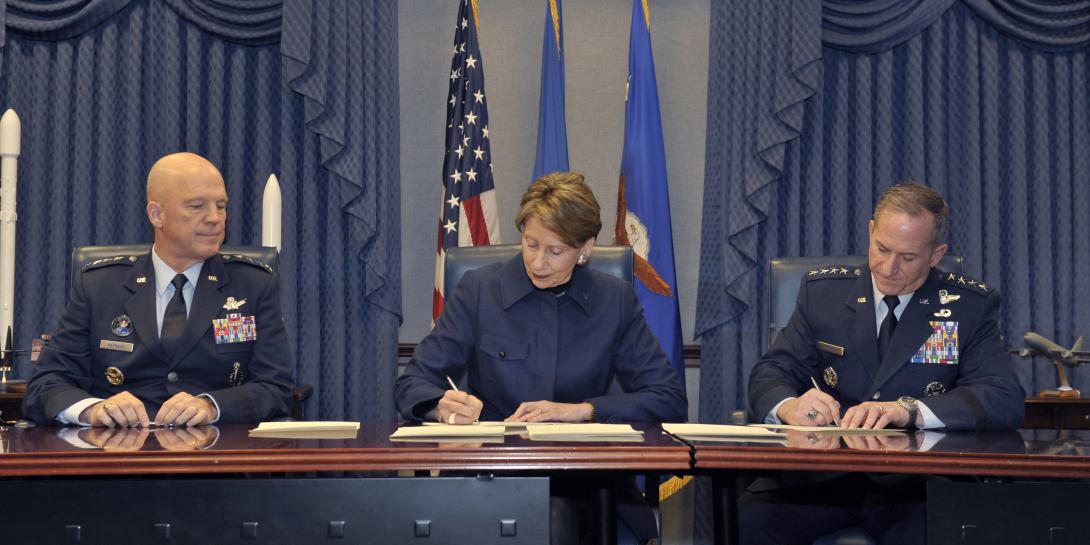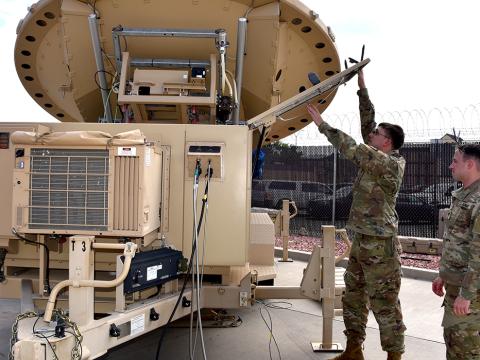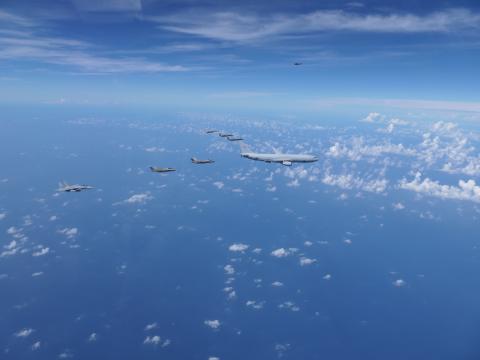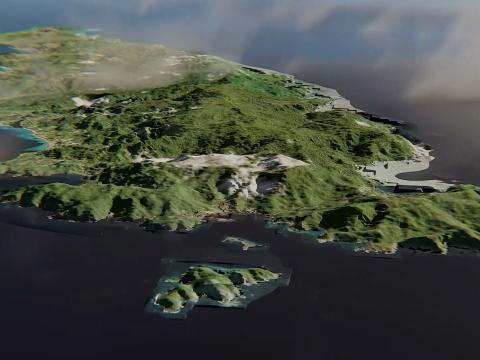U.S. Space Force Defines Its Echelons
The new fiscal year brings a more solidified U.S. Space Force. Beginning October 1, the service will stand up its three field commands: the Space Systems Command, the Space Operations Command and a Space Training and Readiness Command, reports Lt. Gen. B. Chance Saltzman, USSF, deputy chief, Space Operations, Cyber, and Nuclear, U.S. Space Force.
Gen. Saltzman spoke virtually to AFCEA International’s Northern Virginia or NOVA Chapter on September 18, 2020. “Our goal is to be able to increase the decision cycle as fast as possible so that we can provide operations, decisions and warfighting capabilities at an operationally relevant speed,” Gen. Saltzman emphasized.
Naturally, the Space Force’s headquarters is at the Pentagon, with Gen. John “Jay” Raymond, USSF, at the helm, as chief of space operations, and Lt. Gen. David Thompson, USSF, as vice commander, U.S. Space Force, Gen. Raymond’s vice chief of operations.
Below that, the service will have four directorate levels—similar to the Air Staff in the Air Force—including the senior civilian in charge of human capital; the chief operations officer; another three-star general responsible for strategy and resourcing, similar in function to the traditional 5-8 position; and a chief technology and innovation officer, the general explained.
“Again, we are very serious about being a digital force,” he noted. “And so, at the highest levels right there, we're going to have a chief technology and innovation officer.”
The current Space and Missile Systems Center, or SMC, will evolve into the Space Systems Command, as the service’s main acquisition arm, adding laboratory capabilities, the Space Rapid Capabilities Office and other elements, Gen. Saltzman said.
Meanwhile, the Space Operations Command, where the service will conduct its operations, will be the space-related force provider to the 11 U.S. Combatant Commands—including the newest one, the U.S. Space Command led now by Gen. James Dickinson, USA, who took over the one-year old combatant command from Gen. Raymond, its first leader.
“From an Air Force analogy standpoint, the best one is probably to say it's like Air Combat Command, but it's where all of our missions, all of our squadrons will be,” Gen. Saltzman said of the Space Operations Command.
As the readiness arm, the Space Training and Readiness Command, or STAR Command, will provide training, education, doctrine, tactics and development.
“One of the things we have done to establish a very lean force is to collapse what was a five-tiered structure in the Air Force down to three,” the general said. “So, where the Air Force had major commands, numbered Air Forces, wings, groups and squadrons, we are just going to have our field commands, mission deltas and squadrons.”
In lieu of wing commands or group commands, the Space Force will have “an O-6 led mission delta commands,” he clarified.
The Space Force’s squadrons will fall into nine mission deltas, which encompasses everything from space electronic warfare to cyber operations, training and readiness, and orbital warfare, among other mission sets.
“Over the next six months or so, we will stand up the remaining field commands,” Gen. Saltzman said. “Our mission deltas are stood up and the squadrons are there doing the day-to-day work as always, and our headquarters is slowly and surely coming online, but there is still some work to do there.”
As far as the Space Force’s organization, Gen. Saltzman said the service will be a fraction of the size of the other forces, but that will give the Space Force an advantage to move quickly.
“We are small and mighty,” he said. “We're going to have just probably around 3,000 active duty military. We'll bring in quite a bit more in terms of civilian capabilities and contract capabilities, but we probably won't be much larger than about 16,000.”
For other needs, the service will “lean heavily” on the Department of the Air Force. “We're not going to have our own bases,” the general specified. “We will have a garrison commander, but that garrison commander will lean heavily on forces provided by the Air Force in terms of civil engineering and security forces. The traditional base operating support functions will still come from Air Force. Again, we are staying very lean in that regard.”





Comments